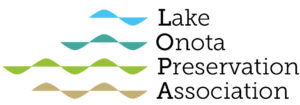Beyond donations, there are many ways you can contribute to the preservation of Onota Lake.
LOPA offers its membership and the community at large many different ways to contribute to the preservation of Onota Lake beyond monetary donations by volunteering a few or sometimes many hours of individual time and effort. The following is not an exhaustive list, but rather highlights some of the major LOPA volunteer activities:
Boat Ramp Monitoring
The City hires boat ramp stewards at Burbank Park to assists boaters to comply with Massachusetts clean boat regulation, and to provide some basic information on threats to the lake from Zebra mussels and other aquatic invasive species. While the City strives for dawn-to-dusk coverage during the boating season, typically there are some gaps in the schedule that are filled by LOPA volunteers. Please consider offering a few hours of your time to this critical activity to prevent exotic species from invading our precious lake! Interested members should contact Todd Robins at trobins@rbwaterlaw.com for details.
Water Chestnut Hand-pulling
For the past several years, LOPA volunteers have been hand-pulling the invasive weed Water Chestnut (Trapa natans) from the area north of Dan Casey Causeway in an important attempt to keep it from getting into the lake proper. This activity usually involves multiple teams of two persons each in small boats/canoes/kayaks pulling and bagging the weeds. It normally takes two to three hours on a weekend morning in early August with a clean-up in September if necessary.
Macrophyte (weed) Monitoring
Annually, LOPA conducts a detailed assessment of the lake’s macrophyte community by surveying many sites around the lake to determine plant species, coverage, and density. This job requires a little easily acquired on-the-job training and is normally accomplished by two or three teams of two or three people with each team spending approximately three hours on the water.
Water Quality Monitoring
LOPA volunteers collect water samples and data measurements from late spring to early fall to obtain an understanding of water quality and lake functioning. Data collected include water clarity measurements, vertical profiles of temperature, pH, and dissolved oxygen, as well as sample collection for analysis of nutrient (phosphorus and nitrogen) concentrations. These data are gathered at two different sites on the lake, at the deep holes in the north and south basins. Each session takes one to two hours, depending on how many volunteers are on the team.



